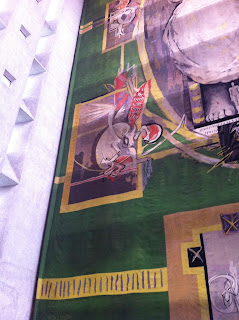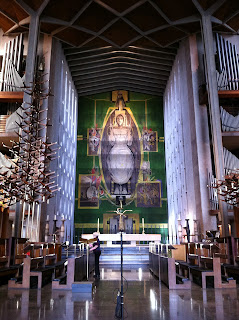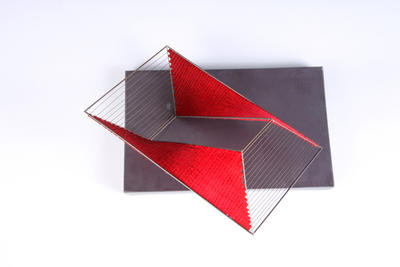I was stocking up on bits and bobs for quilting and was struck by the pair of scissors I picked up - they were made in Sheffield! Not only that, they were made by hand. Why such surprise?
The fact that the scissors are hand finished by a manufacturer which has been operating for 150 years illustrates John Lewis' awareness of the value which many consumers attach to items made by hand. The age of the company takes this further by adding heritage into the mix. The popularity of the hand-made and the emphasis on heritage have been key elements in recent craft dialogue. Not only are consumers interested in how products are made, but they are making them themselves (including me, a regular visitor to haberdashery departments!) Such associations between craft and heritage are not necessarily healthy for contemporary makers, who are trying to reposition themselves in a technological world. In his essay for the
Power of Making catalogue (V&A, 2011) Christopher Frayling wrote:
'The crafts must finally shed their nostalgic connotations... they must even shed their ethical connotations (hard work is good for you) and be more comfortable with a fluency in contemporary language.'
Craft theory which addresses the hand-made and the home-made, also considers the 'where-made'. My excitement at realising these scissors were made in Sheffield is representative of our interest as consumers in the source of the products we buy. The movement of manufacturing out of Britain (the other items I bought were made in Japan, China and Hungary) causes concern in two areas: jobs and skill. The movement of manufacturing = a movement in (or
removal of) employment.
Mary Portas' recent project,
Kinky Knickers, aims to bring lingerie manufacturing back to Middleton, near Manchester.


How is this relevant to tapestry? Tapestry's expense comes form the time it takes to weave. Time = man hours = money. The first sign of Dovecot competing for commissions on an international level came in the early 1950s, when Dovecot was hoping to receive the commission for Graham Sutherland's Christ in Glory tapestry for Coventry Cathedral. The commission eventually went to Pinton Freres workshop in Aubusson, France. Not only could they weave the tapestry for over £1000 less, they could weave it finer, with more warps-to-the-inch. Presumably the only way they could have done this is if their weavers were paid lower wages.
 |
| M799, Tapestry Circles and Green, 2011, David Poston, Bangle of welded stainless steel wire, tapestry woven
cottons.Collaborative piece with Dovecot Studios, Edinburgh Jonathan
Cleaver, weaver W:20.5cm H:21.5cm D:18.5cm |
Losing such a major commission not only threw the tapestry studio into financial turmoil, the weavers were at risk of unemployment. At this time, Dovecot was the only tapestry manufacturer in the UK. Fortunately, the studio was able to continue and it was the weavers at Dovecot, especially Archie Brennan, who set up the tapestry department at Edinburgh College of Art that led to an increase in tapestry practitioners in Britain. This does not mean that tapestry is no longer at risk from foreign sources of production.
Though tapestry weaving cannot be replicated by a machine, it is practised by people in areas of the world where labour is cheap. In 2008 a project entitled
Banners of Persuasion was launched by Christopher and Suzanne Sharp, of The Rug Company. It was an ambitious and exciting project which invited major contemporary artists to design tapestries, but let down by a lack of transparency and inaccurate statements. According to their
website: 'The art of Tapestry and the knowledge of its craft faded long ago in
much the same way as the magnificent tapestries themselves disintegrated.' Studios such as Dovecot, West Dean Tapestry Studio and the Australian Tapestry Studio, not to mention those in France and further afield, combined with the plethora of innovative individual artist-weavers proves this not to be the case. An additional frustration came from a lack of information about the weavers of such tapestries: Who were they? Did the artists visit them? What conditions did they work in? Where did they work? These seem like rudimentary questions, but there is no information on the website, a primary tool for data in the modern age.
 |
| Fish Pool Lacken, 2010, designed by Barbara Rae, woven by David Cochrane, Douglas Grierson and Naomi Robertson at Dovecot Studios, 210 x 122 cm. |
How to continue? All is not lost, and the current interest in the hand-made, home-made and where-made can have a positive impact on studios such as Dovecot. Commissions come from interested individuals and companies, with an interest in the value of such objects as tapestry. Innovative collaborations, such as those with
David Poston, Barbara Rae and Claire Barclay, not only bring tapestry to a wider audience, but question and re-evaluating its position in contemporary culture. And it ensures that skill and knowledge are not lost.









